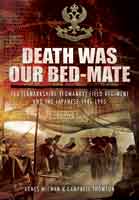North Korea Invades the South (Paperback)
Across the 38th Parallel, June 1950
Imprint: Pen & Sword Military
Series: Cold War, 1945–1991
Pages: 128
Illustrations: 120
ISBN: 9781526708182
Published: 5th February 2018
(click here for international delivery rates)
Need a currency converter? Check XE.com for live rates
| Other formats available | Price |
|---|---|
| North Korea Invades the South ePub (18.1 MB) Add to Basket | £6.99 |
When the world held its breath …
It is more than 25 years since the end of the Cold War. It began over 75 years ago, in 1944 – long before the last shots of the Second World War had echoed across the wastelands of Eastern Europe – with the brutal Greek Civil War. The battle lines are no longer drawn, but they linger on, unwittingly or not, in conflict zones such as Syria, Somalia and Ukraine. In an era of mass-produced AK-47s and ICBMs, one such flashpoint was Korea …
Without warning, at 4.00 a.m. on 25 June 1950, North Korean artillery laid down a heavy bombardment on the Ongjin Peninsula, followed four hours later by a massive armoured, air, amphibious and infantry breach of the ill-conceived post-war ‘border’ that was the 38º north line of latitude. At 11.00 a.m., North Korea issued a declaration of war against the Republic of Korea. Three days later, the South Korean capital, Seoul, fell.
‘The attack upon Korea makes it plain beyond all doubt that Communism has passed beyond the use of subversion to conquer independent nations and will now use armed invasion and war.’ A week after his reaction to the North Korean invasion, US President Harry S. Truman, in compliance with a UN Security Council resolution, appointed that iconic Second World War veteran, General Douglas MacArthur, commander-in-chief of forces in Korea.
The first in a six-volume series on the Korean War, this publication considers those first few fateful days in June 1950 that would cement north–south antagonism to this day, the pariah state that is communist North Korea a seemingly increasing threat to an already tenuous global peace.
It's a good introduction to the Korean War and its wider context and would make an excellent starting point for anyone wanting to know more about that particular global spot.
Miniature Wargames, November 2018 – reviewed by William De Prêtre
A very comprehensive Timeline extends from the 1875 Japanese invasion of Korea through to the detailed period 1945 – 1950. A twelve-page Dramatis Personae covering the key players from North and South Korea, Communist China, the UK, UN, USA, and the USSR. The Introduction covers from 1945 until July 2017 when Kim Jong-un test fired intercontinental ballistic missiles.
RUSI Victoria
The incredibly ill prepared South Korean Forces, even with US reinforcement from their troops, ships and aircraft located in Japan, were eventually pushed into a ‘postage stamp’ in the SE corner of the Korean Peninsula (the Pusan Perimeter).
Included are three excellent coloured maps: The Korean Peninsula (today) and battle maps of the North Korean invasion (25 – 28 June 1950 and 14 July – 4 August). The aircraft of the US, South and North Korea are illustrated as are the infantry weapons initially involved in the conflict. Again newspaper reports have greatly enhanced the narrative. Included is a short selected Bibliography. A second Korean War volume on the United Nation’s Command’s fight for survival is forthcoming.
A precise account of a recent war that has yet to see peace declared.
As usual, a series that puts the point on the i on important facts that changed the world.
José Manuél Rico Cortés (Mister JM) - Miniaturas JM
Read the complete Spanish review here.
About Gerry van Tonder
Gerry van Tonder was born in Zimbabwe and came to Britain in 1999. He is a full-time historian and a published author. Specializing in military history, Gerry has authored Rhodesian Combined Forces Roll of Honour, 1966–1981; Book of Remembrance: Rhodesia Native Regiment and Rhodesian African Rifles; North of the Red Line (South African Defence Force’s border war), and the co-authored definitive Rhodesia Regiment, 1899–1981, a copy of which he presented to the regiment’s former colonel-in-chief, Her Majesty the Queen. Gerry has also written on British local history, including Derby in 50 Buildings, Chesterfield’s Military Heritage and Mansfield Through Time. He recently started with a series of Cold War titles and Echoes of the Coventry Blitz.

























